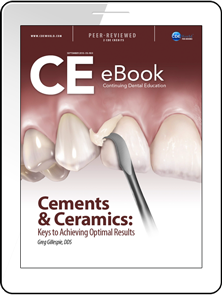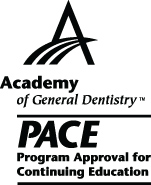CDEWorld > eBooks > Cements & Ceramics: Keys to Achieving Optimal Results


ADA CERP is a service of the American Dental Association to assist dental professionals in identifying quality providers of continuing dental education. ADA CERP does not approve or endorse individual courses or instructors, nor does it imply acceptance of credit house by boards of dentistry. Concerns or complaints about a CE provider may be directed to the provider or to ADA CERP at www.ada.org/cerp/

Approved PACE Program Provider. FAGD/MAGD credit. Approval does not imply acceptance by a state or provincial board of dentistry, or AGD endorsement. 1/1/2023 to 12/31/2028. ID # 209722.
eBook
Released: Friday, September 23, 2016
Expires: Saturday, August 31, 2019
Cements & Ceramics: Keys to Achieving Optimal Results
By Greg Gillespie, DDS
Commercial Supporter: Doxa
Successful, long-term stability of indirect restorations in dentistry is highly dependent on the clinician understanding the relationship of tooth preparation style and the proper cement that it therefore dictates. There are various categories of cements, each with unique considerations. Not all cements can be used for all preparation types. The main indicator of cement choice for a given ceramic is not necessarily the ceramic itself but the type of preparation involved and whether the preparation is retentive or nonretentive. This article will discuss cements, ceramics, and both types of preparations, highlighting the steps involved in achieving predictable cementation.
LEARNING OBJECTIVES:
-
Discuss differences between retentive and non-retentive preparations in regards to cementation of ceramic to tooth
-
Identify three basic types of cements that are appropriate for retentive preparations
-
Explain the distinctions between the priming of glass-based and zirconia/metal-based ceramics for cementation of non-retentive preparations
About the Author
Greg Gillespie, DDS
Private Practice, Vancouver, Washington


